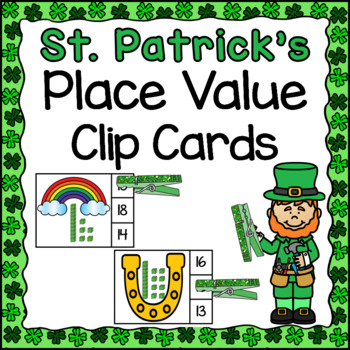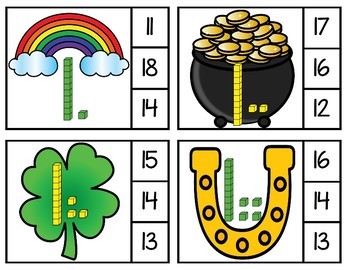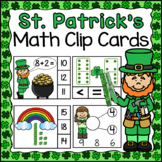St. Patrick's Day Math Place Value Game
- PDF
Also included in
- St. Patrick's Day Math Clip Cards Bundle *Special Price for First 24 hours*This bundle contains the addition clip cards, number bond clip cards, place value and comparing number clip cards for St. Patrick's Day! Each set comes with clothespin clip cards, as well as differentiated recording sheets. CPrice $6.00Original Price $7.50Save $1.50
Description
This St. Patrick's Day Place Value Clip Card Activity will have your students engaged as they count base ten blocks! The cards have cute St. Patrick's Day images and base ten blocks. Add a small sticker to the back of the cards to make this a self-checking activity too. Using the clothespins will also give your students a great fine motor workout! You can use these cards as an early finisher activity, in your small groups, or at center time.
Includes:
36 cards for numbers from 11 to 30.
1 recording sheet for numbers to 11-19
1 recording sheet for numbers to 21-29.
Related Products:
• St. Patrick's Day Activities for Addition & Subtraction
• St. Patrick's Day Activities for Math
• St. Patrick's Day Activities for Measurement
• St. Patrick's Day Activities: CVC Words Clip Cards
• St. Patrick's Day Activity: Roll & Graph






